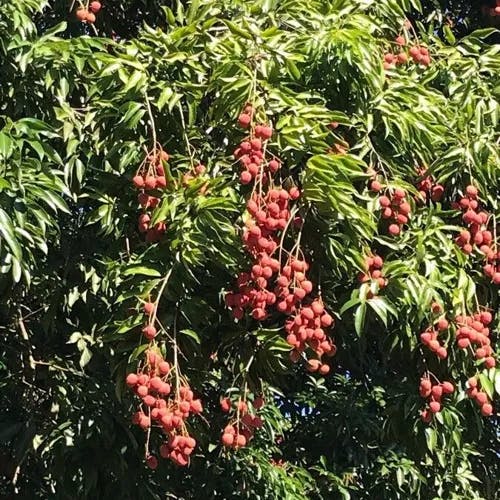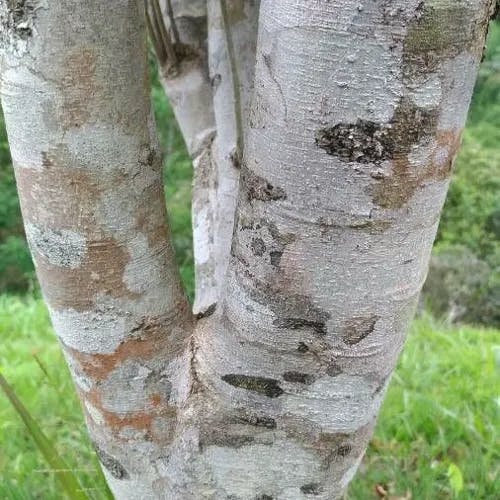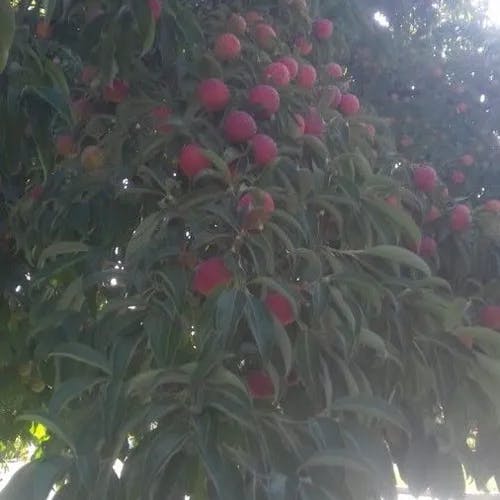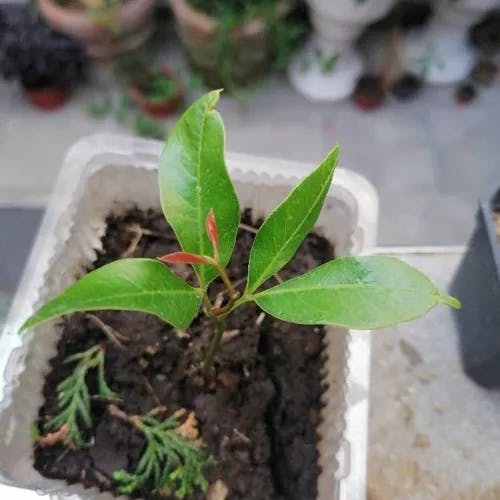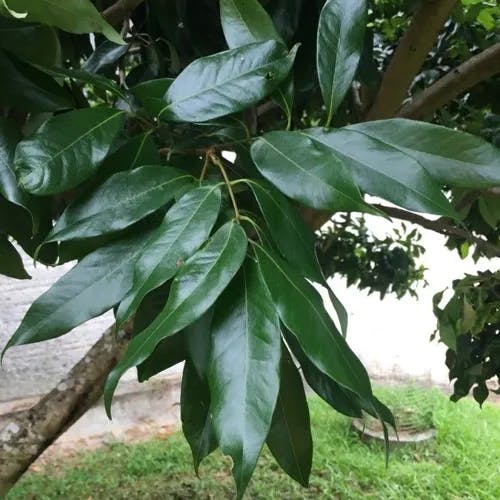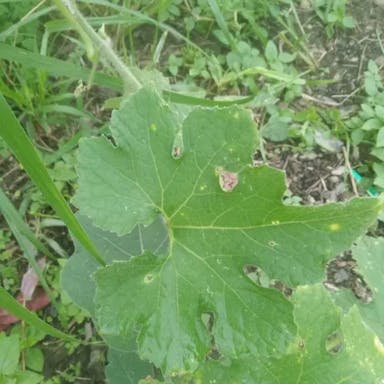The lychee tree, scientifically termed Litchi chinensis, faces numerous insect and fungal afflictions. An arachnid labeled the lychee erinose mite brings about foliar deformities including curling, blistering, and woolly outgrowths below leaves. Employing suitable miticides upon observing mite inhabitants assists with protection. The fruit borer worm tunnels inside fruits eliciting decay. Lopping branches to better air movement and utilizing pheromone snares helps control borers. Fungal sicknesses like anthracnose with Colletotrichum gloeosporioides and Peronophythora litchii's downy blight also arise. Anthracnose blemishes fruits, leaves, and shoots whereas downy blight generates white down below leaves. Fungicides treat these but removing diseased material prevents spread. Litchi chinensis suffers root rot from Phytophthora, inducing wilt and yellowing. Adequate drainage and cautious watering averts this. Overall, fertilizing and watering properly makes Litchi chinensis more resilient against pests and diseases.
Proper nourishing and irrigating boosts Litchi chinensis's resilience to afflictions. The lychee erinose mite Aceria litchii deforms leaves while the fruit borer Conopomorpha sinensis rots fruits inside. Pruning for air flow and pheromone traps control borers. Fungi like Colletotrichum gloeosporioides anthracnose and Peronophythora litchii downy blight also strike. Fungicides treat, but removing diseased parts prevents spread. Phytophthora root rot causes wilt and yellowing. Good drainage and careful watering prevents this. Monitoring for pests and promptly using miticides or fungicides assists as well. Overall, keeping Litchi chinensis vigor up wards through appropriate care makes it less susceptible.
The lychee tree or Litchi chinensis confronts pest and disease troubles. The lychee erinose mite Aceria litchii brings foliar deformities. Miticide application when mites are seen helps. The fruit borer Conopomorpha sinensis tunnels inside fruits. Pruning for air circulation and pheromone traps controls borers. Fungal diseases like anthracnose from Colletotrichum gloeosporioides and downy blight from Peronophythora litchii also occur. Fungicides treat but removing and destroying infected parts prevents spread. Root rot from Phytophthora makes leaves wilt and yellow. Good drainage and careful watering prevents root rot. Monitoring for pests and promptly applying miticides or fungicides assists. Keeping Litchi chinensis healthy through proper care makes it more resilient.
The lychee tree or Litchi chinensis is plagued by pests and diseases. The lychee erinose mite Aceria litchii causes leaf curling, blistering, and woolly growths. Applying miticides when mites are detected helps protect plants. The fruit borer Conopomorpha sinensis bores inside fruits leading to rot. Pruning for air flow and pheromone traps control borers. Fungal diseases like anthracnose from Colletotrichum gloeosporioides and downy blight from Peronophythora litchii also strike. Using fungicides treats them but removing and destroying infected material prevents spread. Root rot caused by Phytophthora makes leaves wilt and yellow. Proper drainage and careful watering prevents root rot. Monitoring for pests and promptly applying miticides or fungicides when detected boosts plant health and resilience. Overall, keeping Litchi chinensis vigorous through optimal care makes it less susceptible.
